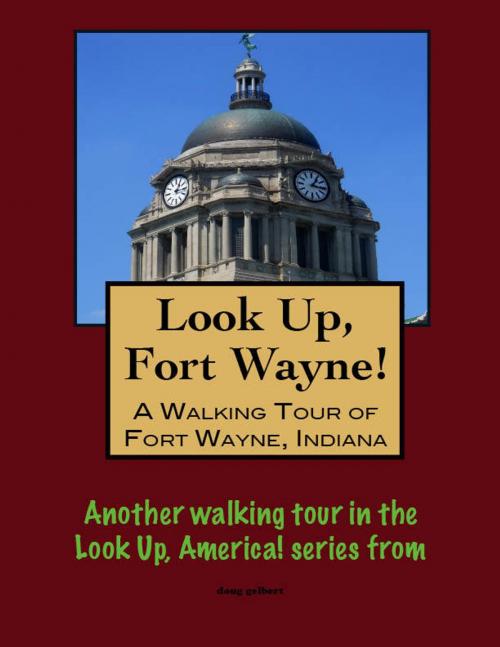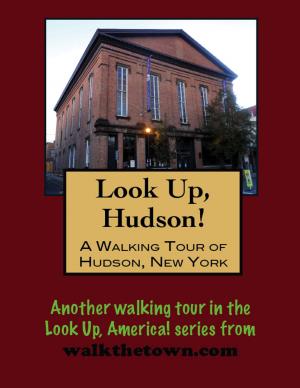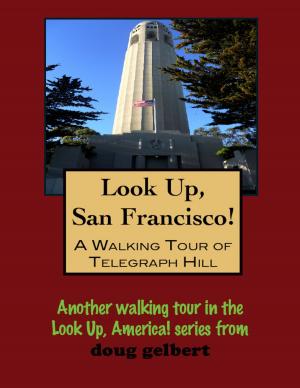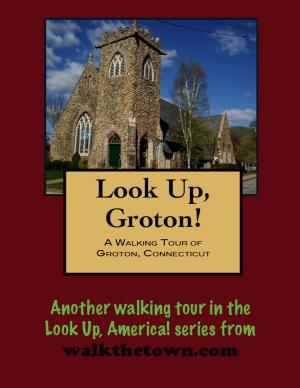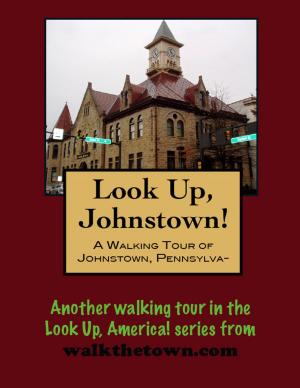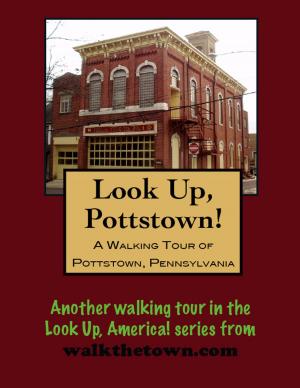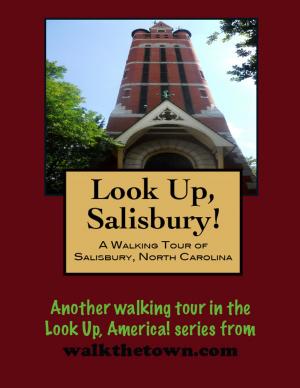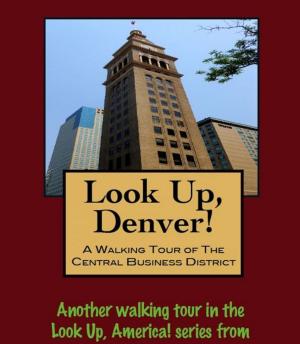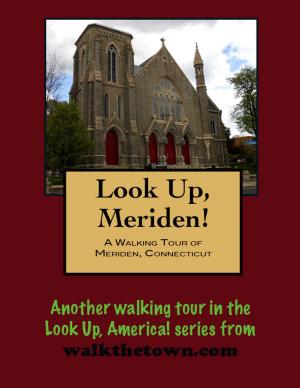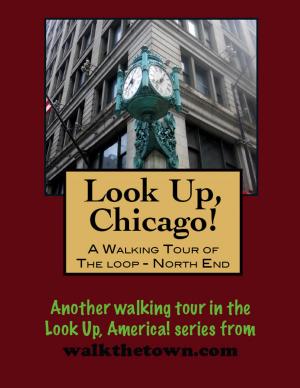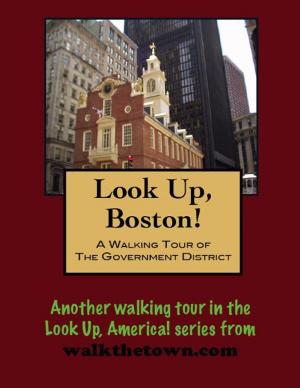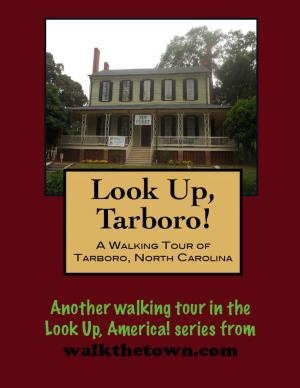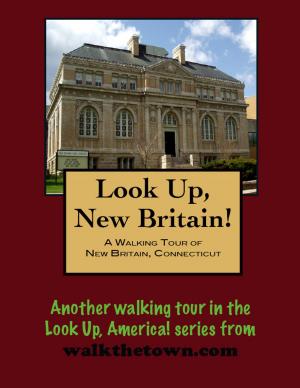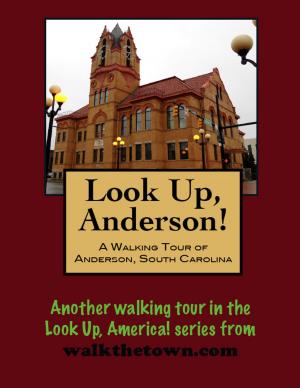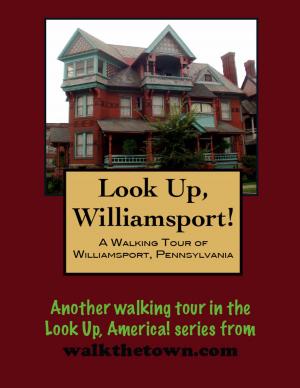Look Up, Fort Wayne! A Walking Tour of Fort Wayne, Indiana
Nonfiction, Travel, United States, History, Americas| Author: | Doug Gelbert | ISBN: | 9781465808929 |
| Publisher: | Doug Gelbert | Publication: | November 30, 2011 |
| Imprint: | Smashwords Edition | Language: | English |
| Author: | Doug Gelbert |
| ISBN: | 9781465808929 |
| Publisher: | Doug Gelbert |
| Publication: | November 30, 2011 |
| Imprint: | Smashwords Edition |
| Language: | English |
There is no better way to see America than on foot. And there is no better way to appreciate what you are looking at than with a walking tour. Whether you are preparing for a road trip or just out to look at your own town in a new way, a downloadable walking tour is ready to explore when you are.
Each walking tour describes historical and architectural landmarks and provides pictures to help out when those pesky street addresses are missing. Every tour also includes a quick primer on identifying architectural styles seen on American streets.
Anthony Wayne was one of George Washington’s ablest lieutenants during the Revolutionary War, distinguishing himself on the field at Germantown, Monmouth, Stony Point and elsewhere. At Valley Forge, Wayne took on the dangerous mission of foraging for cattle and supplies in British-held New Jersey and eventually drove some 150 head of beef cattle across the Delaware River to fortify the starving troops in what was dubbed “The Great Cow Chase.” By the end of the war Anthony Wayne was a major general.
He entered politics in the new republic but President Washington called Wayne out of civilian life in order to lead an expedition in the Northwest Indian War, which up to that point had been a disaster. Any more embarrassing defeats in the West might embolden the British to move against the new America and reclaim its lost lands. After negotiations with Chief Little Turtle, war chief of the Miami Indians, failed Anthony’s army attacked at Fallen Timbers, south of Toledo, on August 20, 1794. In an hour the Americans had routed the Miamis. The Americans moved south and constructed a fort where the St. Joseph River and the St. Marys River join to form the Maumee River and on October 22, 1794 named the position Fort Wayne.
Wayne was in charge of operations in the Northwest and negotiated the Treaty of Greenville that gave most of modern-day Ohio to the United States. In 1796, after an inspection tour of frontier posts the general died of complications from gout when he was only 51 years old. A score of villages, towns and cities would be named for Anthony Wayne, more than a dozen counties, a river, a national forest and even Batman’s stately Wayne Manor.
Fort Wayne rose to prominence with the completion of the Wabash & Erie Canal, at 460 miles the longest canal ever dug in the United States. Here, the canal crossed 5 miles to the Little Wabash River and headed downstream through Indiana. Since this was the highest point on the canal, Fort Wayne became known as the “Summit City.” The canal began operation in 1843 but it was obsolete almost before its completion. While it did not bring great wealth to Fort Wayne it did establish the town as an important center of trade that attracted the railroads. In the first decade of railroad building in the 1850s the population hopped from 4,282 to 10,388.
With the railroads came industry and the town’s population jumped by about 35% every decade for seventy years. Railroad car wheels, washing machines, mining machinery, lumber products and copper wire all poured out of Fort Wayne. In 1891 the Wayne Knitting Mills opened to produce the first full-fashined hosiery in the United States. Sylvanus F. Bowser manufactured self-measuring oil tanks here and the city cranked out most of America’s filling station equipment. General Electric, Magnavox, Westinghouse and International Harvester were all iconic employers in Fort Wayne.
Fort Wayne was a prototypical Rust Belt manufacturing city. But the city’s economy diversified with the times and never experienced a crushing decline like its northern neighbors. Save for a small blip in the 1970s the population has never stopped expanding. As a result the Fort Wayne streetscape has seen a steady turnover of buildings that has stripped the town of many of its heritage downtown structures but our walking tour will begin in the shadow of two of its most glorious survivors...
There is no better way to see America than on foot. And there is no better way to appreciate what you are looking at than with a walking tour. Whether you are preparing for a road trip or just out to look at your own town in a new way, a downloadable walking tour is ready to explore when you are.
Each walking tour describes historical and architectural landmarks and provides pictures to help out when those pesky street addresses are missing. Every tour also includes a quick primer on identifying architectural styles seen on American streets.
Anthony Wayne was one of George Washington’s ablest lieutenants during the Revolutionary War, distinguishing himself on the field at Germantown, Monmouth, Stony Point and elsewhere. At Valley Forge, Wayne took on the dangerous mission of foraging for cattle and supplies in British-held New Jersey and eventually drove some 150 head of beef cattle across the Delaware River to fortify the starving troops in what was dubbed “The Great Cow Chase.” By the end of the war Anthony Wayne was a major general.
He entered politics in the new republic but President Washington called Wayne out of civilian life in order to lead an expedition in the Northwest Indian War, which up to that point had been a disaster. Any more embarrassing defeats in the West might embolden the British to move against the new America and reclaim its lost lands. After negotiations with Chief Little Turtle, war chief of the Miami Indians, failed Anthony’s army attacked at Fallen Timbers, south of Toledo, on August 20, 1794. In an hour the Americans had routed the Miamis. The Americans moved south and constructed a fort where the St. Joseph River and the St. Marys River join to form the Maumee River and on October 22, 1794 named the position Fort Wayne.
Wayne was in charge of operations in the Northwest and negotiated the Treaty of Greenville that gave most of modern-day Ohio to the United States. In 1796, after an inspection tour of frontier posts the general died of complications from gout when he was only 51 years old. A score of villages, towns and cities would be named for Anthony Wayne, more than a dozen counties, a river, a national forest and even Batman’s stately Wayne Manor.
Fort Wayne rose to prominence with the completion of the Wabash & Erie Canal, at 460 miles the longest canal ever dug in the United States. Here, the canal crossed 5 miles to the Little Wabash River and headed downstream through Indiana. Since this was the highest point on the canal, Fort Wayne became known as the “Summit City.” The canal began operation in 1843 but it was obsolete almost before its completion. While it did not bring great wealth to Fort Wayne it did establish the town as an important center of trade that attracted the railroads. In the first decade of railroad building in the 1850s the population hopped from 4,282 to 10,388.
With the railroads came industry and the town’s population jumped by about 35% every decade for seventy years. Railroad car wheels, washing machines, mining machinery, lumber products and copper wire all poured out of Fort Wayne. In 1891 the Wayne Knitting Mills opened to produce the first full-fashined hosiery in the United States. Sylvanus F. Bowser manufactured self-measuring oil tanks here and the city cranked out most of America’s filling station equipment. General Electric, Magnavox, Westinghouse and International Harvester were all iconic employers in Fort Wayne.
Fort Wayne was a prototypical Rust Belt manufacturing city. But the city’s economy diversified with the times and never experienced a crushing decline like its northern neighbors. Save for a small blip in the 1970s the population has never stopped expanding. As a result the Fort Wayne streetscape has seen a steady turnover of buildings that has stripped the town of many of its heritage downtown structures but our walking tour will begin in the shadow of two of its most glorious survivors...
